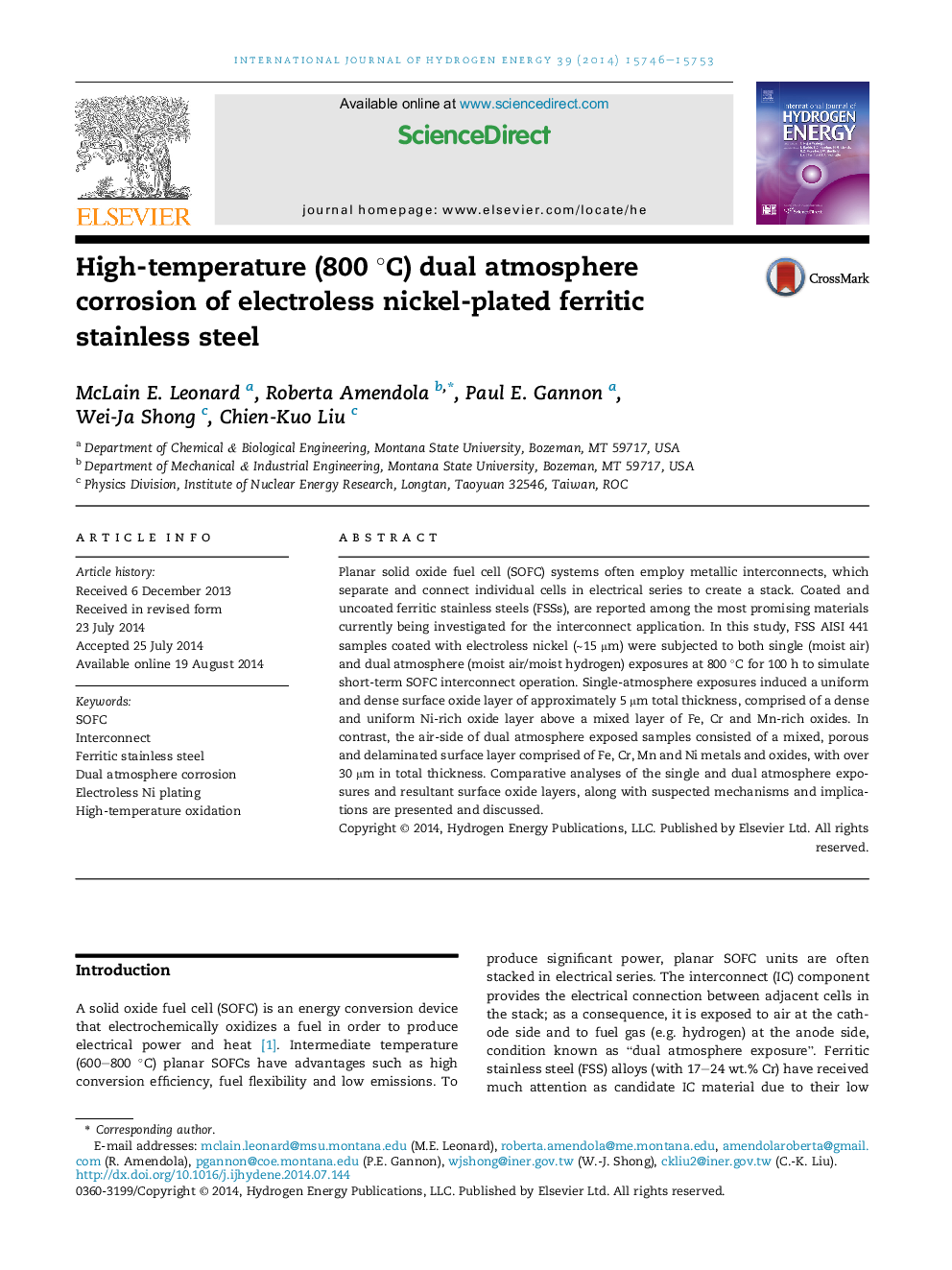| Article ID | Journal | Published Year | Pages | File Type |
|---|---|---|---|---|
| 1272413 | International Journal of Hydrogen Energy | 2014 | 8 Pages |
•Electroless Ni plated FSS 441 samples were subjected to single and dual atmospheres.•Single and air-side dual atmosphere TGOs were analyzed and compared.•A uniform, dense and well-adhered TGO with NiO formed in single atmosphere.•Anomalous surface oxide layer composition and morphology formed in dual atmosphere.•Ni/FSS 441 inter-diffusion was found in single and dual atmospheres at 800C.
Planar solid oxide fuel cell (SOFC) systems often employ metallic interconnects, which separate and connect individual cells in electrical series to create a stack. Coated and uncoated ferritic stainless steels (FSSs), are reported among the most promising materials currently being investigated for the interconnect application. In this study, FSS AISI 441 samples coated with electroless nickel (∼15 μm) were subjected to both single (moist air) and dual atmosphere (moist air/moist hydrogen) exposures at 800 °C for 100 h to simulate short-term SOFC interconnect operation. Single-atmosphere exposures induced a uniform and dense surface oxide layer of approximately 5 μm total thickness, comprised of a dense and uniform Ni-rich oxide layer above a mixed layer of Fe, Cr and Mn-rich oxides. In contrast, the air-side of dual atmosphere exposed samples consisted of a mixed, porous and delaminated surface layer comprised of Fe, Cr, Mn and Ni metals and oxides, with over 30 μm in total thickness. Comparative analyses of the single and dual atmosphere exposures and resultant surface oxide layers, along with suspected mechanisms and implications are presented and discussed.
